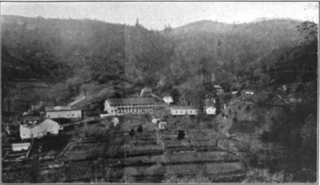
Harbin Hot Springs is a non-profit hot spring retreat and workshop center at Harbin Springs in Lake County, Northern California. Named after Matthew Harbin, a pioneer who settled in the Lake County area. It is located about two hours northeast of the San Francisco Bay Area, in the United States. The facility was partially destroyed in the Valley Fire in September 2015, and was temporarily closed; as of September 2017 it was announced the resort would reopen in early spring 2018. In January 2019 it partially reopened, including the main pools and sauna, and a limited cafeteria service.

Putah Creek is a major stream in Northern California, a tributary of the Yolo Bypass, and ultimately, the Sacramento River. The 85-mile-long (137 km) creek has its headwaters in the Mayacamas Mountains, a part of the Coast Range, and flows east through two dams. First, Monticello Dam forms Lake Berryessa, below which Putah Creek forms the border of Yolo and Solano Counties, and then flows to the Putah Diversion Dam and Lake Solano. After several drought years in the late 1980s, the majority of Putah Creek went dry, prompting a landmark lawsuit that resulted in the signing of the Putah Creek Accord in 2000. The Accord established releases from the dams to maintain stream flows in Putah Creek, with natural flow regimes which spike in winter/spring and ebb in summer/fall. The restoration of natural flow regimes has resulted in a doubling of riparian bird species and a return of spawning native steelhead trout and Chinook salmon, as well as protecting the livelihood of farmers on the lower watershed.
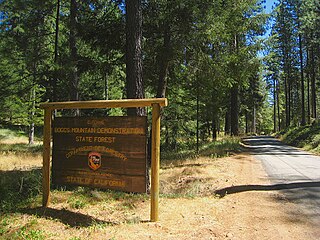
Boggs Mountain Demonstration State Forest is a state forest in Lake County, California that covers the northwest of Boggs Mountain. It was founded in 1949, and came into operation in 1950 when most of the site had been clear cut. The purpose was to demonstrate good practices in restoring and managing a forest. The state forest was open for recreational use, including camping, hiking, mountain biking etc. The 2015 Valley Fire destroyed 80% of the trees. The state forest as of 2021 was replanting saplings.
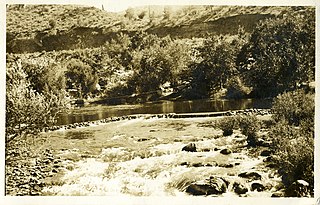
Miracle Hot Springs is an unincorporated community in the Kern River Valley, in Kern County, California. It is located along the Kern River in the Sequoia National Forest 10 miles (16 km)West of Lake Isabella, California, at an elevation of 2,382 feet (726 m).
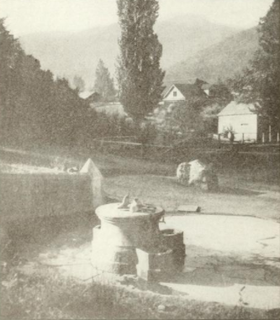
Bartlett Springs is a set of springs around which a resort was developed in Lake County, California. There were four improved springs, each delivering cool carbonated water with considerable amounts of suspended iron. In 1914 it was the largest such resort in Lake County, capable of accommodating up to 500 guests. There was also a bottling plant designed to maintain the natural carbonation as the bottles were filled and capped. It could fill 10,000 per day during the season from May to October when the roads were passable.

Castle Rock Springs was a resort Lake County, California built around a group of mineral springs, including one hot spring with relatively high volumes of water.

Glenbrook was a resort in Lake County, California. It was located 10 miles (16 km) south-southeast of Kelseyville, at an elevation of 2293 feet.

Highland Springs is a set of springs which was turned into a resort in the 19th century in Lake County, California. The resort grew to be able to accommodate 200 people, attracted by the curative powers of the mineral waters and the lovely mountain scenery. In the 1920s its popularity waned, the hotel was partly burned, and it passed through various hands before the county claimed eminent domain, bought the property, and flooded it with the Highland Springs Reservoir. The reservoir is surrounded by the Highland Springs Recreation Area, managed by the county.
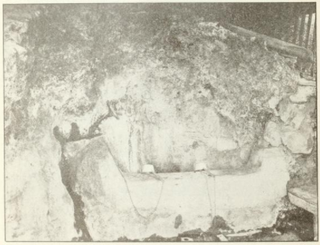
Hough Springs is a set of springs that was turned into a resort in the 19th century in Lake County, California.

Howard Springs is set of springs turned into a resort in the 1870s in Lake County, California. The resort catered primarily to people interested in the curative powers of the mineral waters. Guests were accommodated in cabins or tents. At one time it had an official post office. The resort changed hands many times over the years, with various changes to the lodge, accommodations and bathhouses, until closing in 1970. For a period it was leased for geothermal exploration. Today it has reopened as a health resort.

Newman Springs is a set of springs in Lake County, California. At one time there was a resort at the springs.
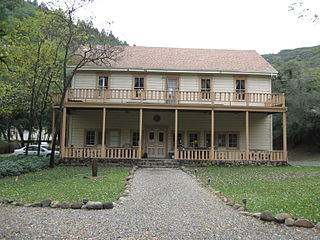
Saratoga Springs is set of springs that was turned into a resort in the 1870s in Lake County, California. At its peak the resort could accommodate 250 people. The resort was closed after the main hotel burned down, but reopened as a retreat in 1991.

Seigler Springs is a set of springs in Lake County, California around which a resort developed in the 19th century. In the 1930s the resort was expanded, and in 1947 an airport opened nearby. The resort declined in the 1960s. Part of it was separated out and became a residential subdivision, while part became a religious retreat. The 2015 Valley Fire caused great damage.

Kelsey Creek is a watercourse in Lake County, California, United States, that feeds Clear Lake from the south. The watershed was forest-covered. In the lower parts it has been converted to farmland and for urban use. Higher up the forests have been cleared, regrown and cleared again. The northern part of the creek flows through a geothermal field that feeds power plants and hot springs. The wooded Cobb area in the higher part of the watershed holds resorts and resort communities, some dating to the 1850s.

Hoberg's Resort was a holiday resort in Lake County, California. The unincorporated community of Hobergs grew up around it. The resort started out in the 1890s as a sideline where a farmer's wife offered meals to travelers, and it then became an economical place for campers and hunters to stay. It expanded, and after the founder's grandsons took over in 1934 it grew into a large and fashionable resort catering to weekend visitors who motored up from the San Francisco Bay Area. There was a swimming pool, dining hall, bar and outdoors dance floor, as well as amenities like hairdressers, a barber, resident physician, coffee shop and general store. Hollywood celebrities, politicians and businessmen stayed at the resort and were entertained by big-name musicians. By the 1960s it went into decline, and closed in 1971. The main building was destroyed by the 2015 Valley Fire.

Allen Springs is a group of mineral water springs in Lake County, California. From 1874 the springs were surrounded by a resort with a hotel, cottages, saloon, store and so on. The resort was turned into a private club in 1912 and had been abandoned by 1940. By 2021 the site had returned to nature.
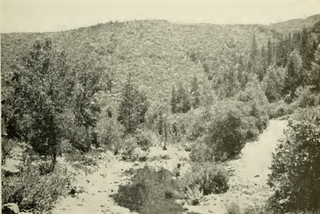
Bartlett Creek is a creek in Lake County, California. It is a tributary of North Fork Cache Creek.

Big Canyon Creek is a creek in Lake County, California. It is a tributary of Putah Creek.

Harbin Mountain is a mountain in Lake County, California. It may be seen as a high point on a spur of Boggs Mountain or as a connected mountain to the southeast of Boggs Mountain.

The Blue Lakes are a string of two or three lakes in Lake County, California, set in a deep canyon. At one time they seem to have been in the Russian River watershed, but a recent geological upheaval cut them off from that basin and they now drain via Scotts Creek into Clear Lake in the Sacramento River basin. In the 19th and early 20th centuries there were several resorts around the lakes. Their waters have been highly altered by human activity and most of their native fish are lost, but they have a healthy population of largemouth bass.






















